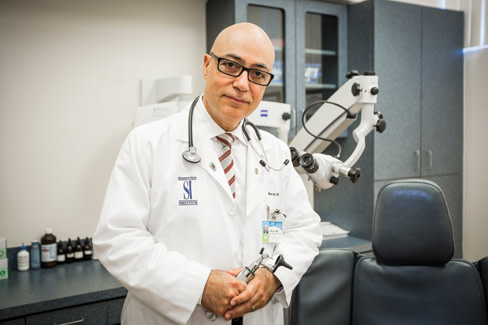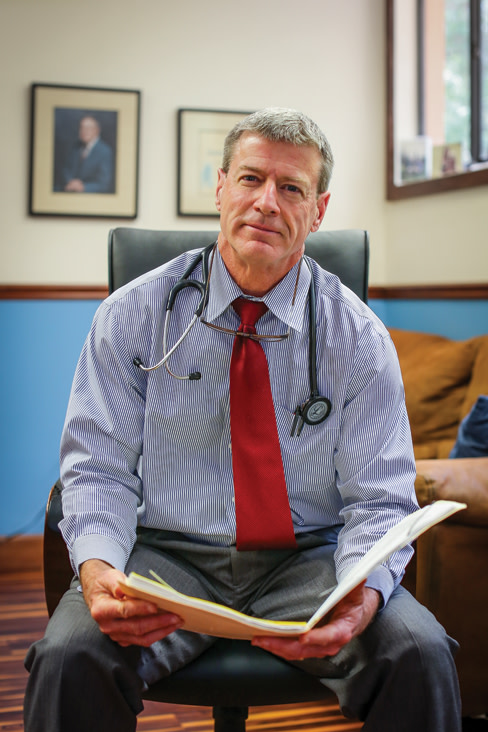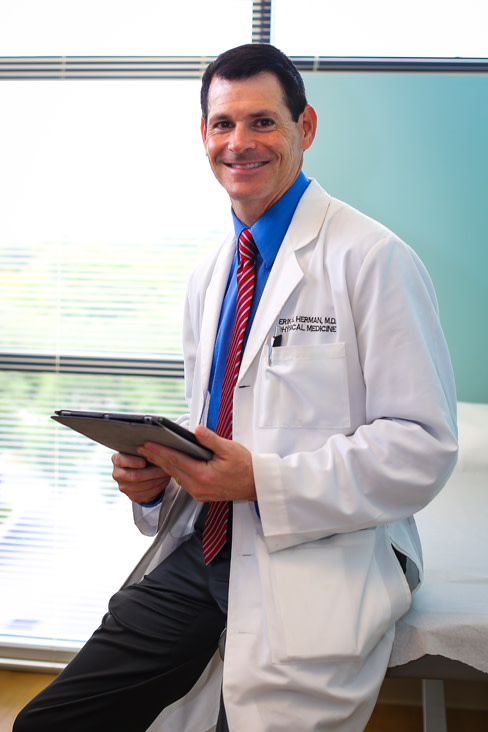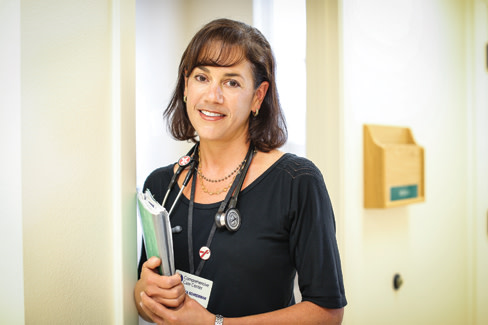Top Doctors On the Patient They Remember Most

A deaf young girl from China gets a new life—and the gift of hearing—in America.
It’s not hard for ear, nose and throat specialist Dr. Jack Wazen of Sarasota’s Silverstein Institute to choose the patient he remembers most from his more than 30 years of practice, both here and in New York.
“That comes to me very easily,” says Wazen. “It was a little girl, five years old, who was found at a train station in China. She was deaf, and adopted by an American family who brought her here. They knew she had issues, but they chose to adopt her. And they brought her to the institute.”
There he performed what has become an everyday act of medical magic. “We put two cochlear implants in her ears, and made her hear again,” he says.
Cochlear implants have been around for years, Wazen says. But, “The technology has changed over the last few years. It used to be that the patient might hear sounds, but speech could be a problem. Ideally, with a child like this we would do the procedure by the age of two. But research has shown that even children who have it later do catch up in their speech development by the age of 11. It’s really something to see how life-changing the technology is.”
The implants, he explains, are sophisticated computers that take speech and translate it, by using electrodes that stimulate nerve endings in different parts of the inner ear. Though they were originally used mostly for children, they are now often used for senior citizens—typically people who have grown dissatisfied with their hearing aids. “Some people adjust quickly,” Wazen says. “Within a month they are speaking on the phone. But improvement can continue over a year’s time, as long as they practice listening.”
The young girl from China continues to thrive, he says. “At our gala [for the institute’s nonprofit Ear Research Foundation] the next year, she ran up to me and hugged me,” he says. “It gives me goosebumps now just to talk about it. Here was a young girl, left alone and abandoned, who was adopted and whom we were instrumental in bringing back to the world of hearing after being totally deaf. Now she’s learning to speak. I still see her periodically, and she’s doing very well.”

A sleep doctor recalls a man whose violent bad dreams exemplify a little-known but classic disorder.
Eight years ago, an orthopedist referred a man with a broken arm to Dr. David Law, a Bradenton-based sleep specialist. During one of his frequent bad dreams, the patient had injured himself when he dove out of bed, hitting his head on the nightstand and breaking his wrist when he hit the ground.
After a couple of tests, Law diagnosed REM (rapid-eye movement) behavior disorder. REM “is a very active time for dreaming,” says Law. “Normally, we’re not able to move during that stage of sleep—our skeletal muscles are paralyzed.” REM behavior disorder (RBD) inhibits this natural paralysis. The condition tends to affect people over the age of 65—almost exclusively men—and may be connected to the family of neurodegenerative disorders that includes Parkinson’s disease.
“It’s probably the most common condition you’ve never heard of,” Law says. It affects as many as 1 in 1,000 men over the age of 65. Still, Law stresses, dream-enacting behaviors are not normal.
“For reasons unclear, the dreams [during RBD] tend to be frightening,” says Law. “We dream that we’re being chased by animals or bad guys; we’re swinging kicking, yelling, cursing. Because of the lack of REM paralysis, that can result in severe injuries.”
Often, spouses become aware of RBD first, when they repeatedly endure the flailing arms and legs of their unconscious bedmates. “When I saw him, he was a very normal, retired, mentally active, physically active man,” Law remembers. “He was embarrassed by the fact that he had hit his wife [in his sleep]. In the dreams he was defending her; in actuality he was hitting her.”
Fortunately, RBD is easily treated with medication. Now, Law’s patient, whom he describes as “a man of few words,” somewhat begrudges his annual checkups—but he’s no longer bothered by active nightmares. “It’s been so long since he had the last one, he doesn’t have to think about it too much,” Law says. “He just has to take a tiny pill every night.”

An elderly man complaining of back pain actually suffers from something far more serious.
Dr. Erik Herman of Kennedy White Orthopaedic Center faces patients in a lot of pain every day in his practice. But one patient out of many stood out—in a very different way.
“It was a gentleman in his 80s,” Herman recalls, “who came in with severe back pain. He said it wrapped around and down his left arm. That’s unusual; normally that type of pain would spread down to the leg.”
As he examined the man, Herman says he found that his pants were “pulled up to his armpits. When he pointed to his back to indicate the pain, he was really indicating chest pain. It was a cardiac problem.” Herman quickly got the man to a heart doctor, where he received immediate treatment. “The outcome was very good,” Herman says. “The moral of the story is to listen to patients. Follow the directions they give, and you’ll come up with the answer.”
It’s a help in Herman’s specialty as a physiatrist, mostly treating neck and back pain, that he was a college gymnast and also worked as a computer programmer—two fields that can be tough on those areas of the human body.
“As a gymnast, I had hurt every part of my body,” Herman says. That experience makes it natural for him to understand what a toll pain can take on a patient’s everyday life and happiness. “I take pride in helping people with their injuries, using therapy, cortisone shots and electromyography [a computerized test for “pinched nerves” or muscle disease],” he says. He tries to avoid sending patients on to surgery whenever possible.
“It’s all about quality of life,” Herman adds. “You can continue with your hobbies of golf or tennis or fishing without serious pain if you improve your health habits. I’m a very strong proponent of exercise and fitness. Exercise gets more important with every decade of life.”

A man with HIV inspires a young intern to specialize in infectious diseases.
In 1997, Dr. Tanya Schreibman was a young intern at Yale New Haven Hospital planning to go into internal medicine when, for the first time, she had to break the news to a patient—a 40-year-old man who had been admitted to the hospital with pneumonia—that he had HIV. It was a time of enormous breakthroughs in the treatment of HIV and AIDS, and Schreibman says her work with that patient made her decide to switch from internal medicine to infectious disease.
“This patient inspired me. He was so angry and so sick [at first,] but learned to trust me. Even after I moved to Florida we kept in touch. His mother called me last year to tell me he passed away, actually of a non-HIV related disease.”
Today, Schreibman treats 600 patients as medical director of the nonprofit Community AIDS Network in Sarasota. “I chose HIV because it’s a developing, challenging field from a medical and research standpoint, but also because caring for the patient as a whole person is so rewarding,” she says.
The recent news that a toddler treated with antiretroviral drugs was functionally cured of HIV brings even more hope. “It’s incredibly exciting to see all the changes,” Schreibman says. “Before the 1990s, it was a time of true despair. Now when a 25-year-old is diagnosed, there is no difference in their life span even though there are challenges along the way. Now it’s a chronic disease no different from a diagnosis of diabetes.”
Schreibman ventured out of her comfort zone to compete in—and win—CAN’s Dancing with Our Stars fund raiser two years ago. “I did it for the clinic,” she says. “I love the Community AIDS Network. I love that it’s nonprofit, that it cares for people whether or not they have insurance. And I did it for my children; it taught them that life is what you put into it. When you challenge yourself, great things can come of it.”
Read the full 2013 Top Doctors list here.